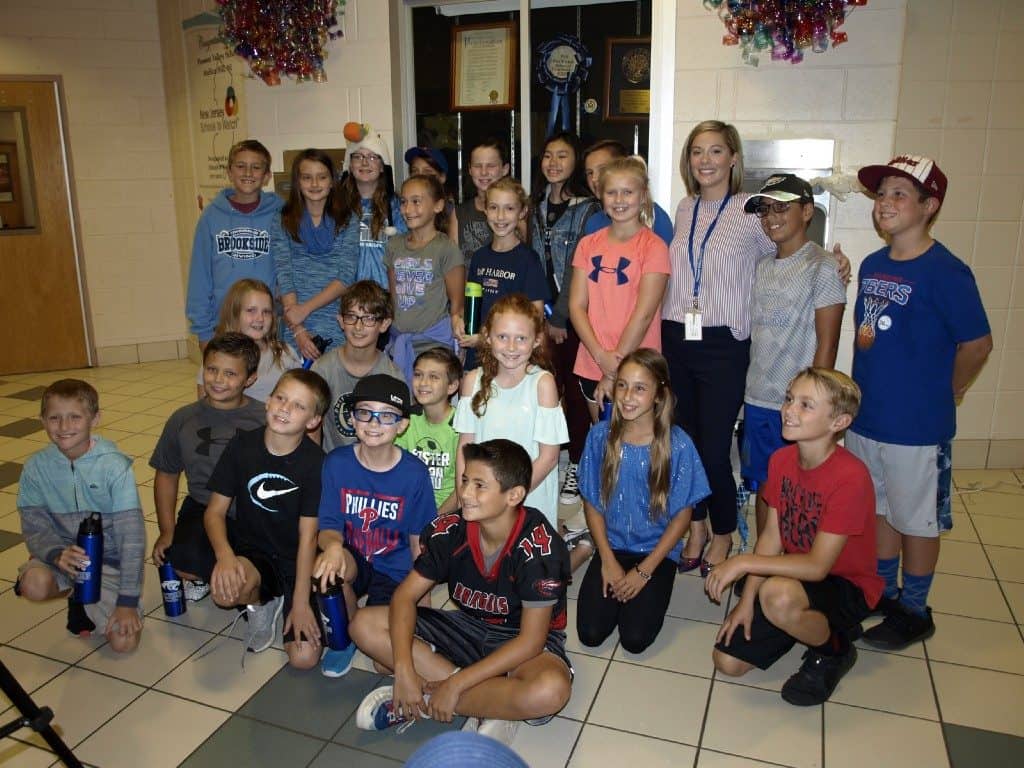
Fourth grade teacher Meghan Loomis said she couldn’t be more proud of the hard work her students did.
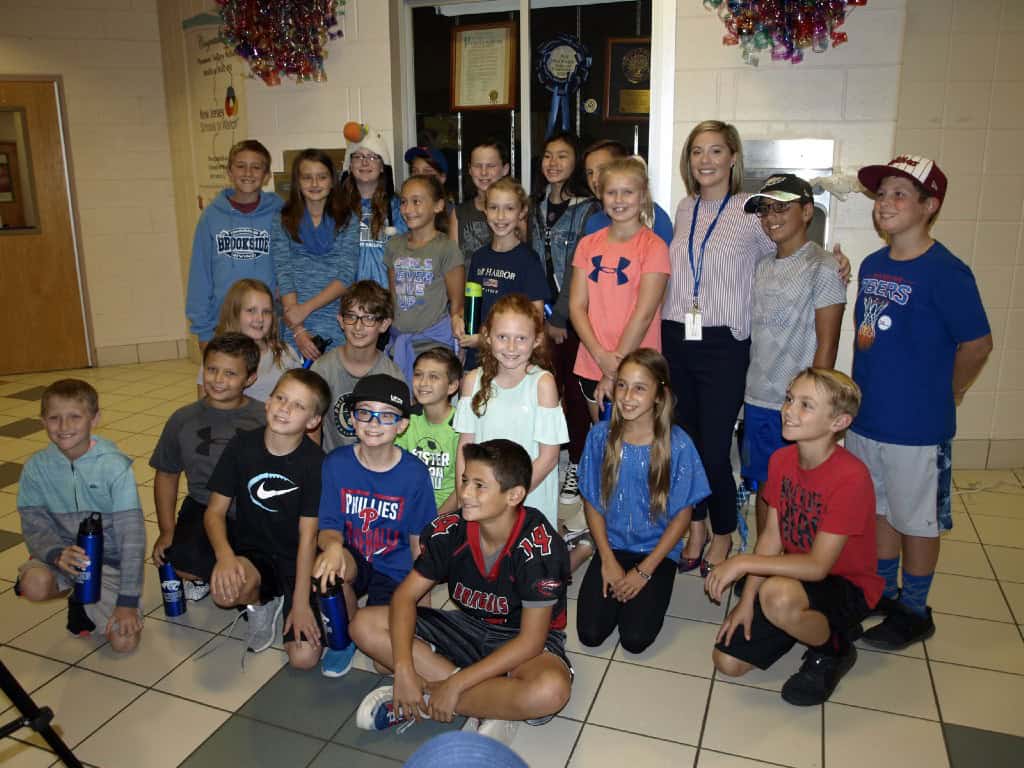
By KRYSTAL NURSE
The Sun
Throughout the previous school year, Meghan Loomis taught her then fourth-grade students at Pleasant Valley School about plastic water bottle waste and how her students can upcycle them into colorful art pieces, which drove them to create prototypes and models for reusable bottles that will be filled at their new filling stations and drinking fountains.
The idea first came to Loomis’ mind following her recent vacation to Bali, Indonesia, where she saw the province’s handling of waste management, coupled with the influx of tourists, and wanted to make an impact in Harrison Township.
“We knew we wanted to collect plastic bottles, raise awareness of how many get thrown away and aren’t recycled, and showcase what we can do with them instead of just throwing them away,” said Loomis.
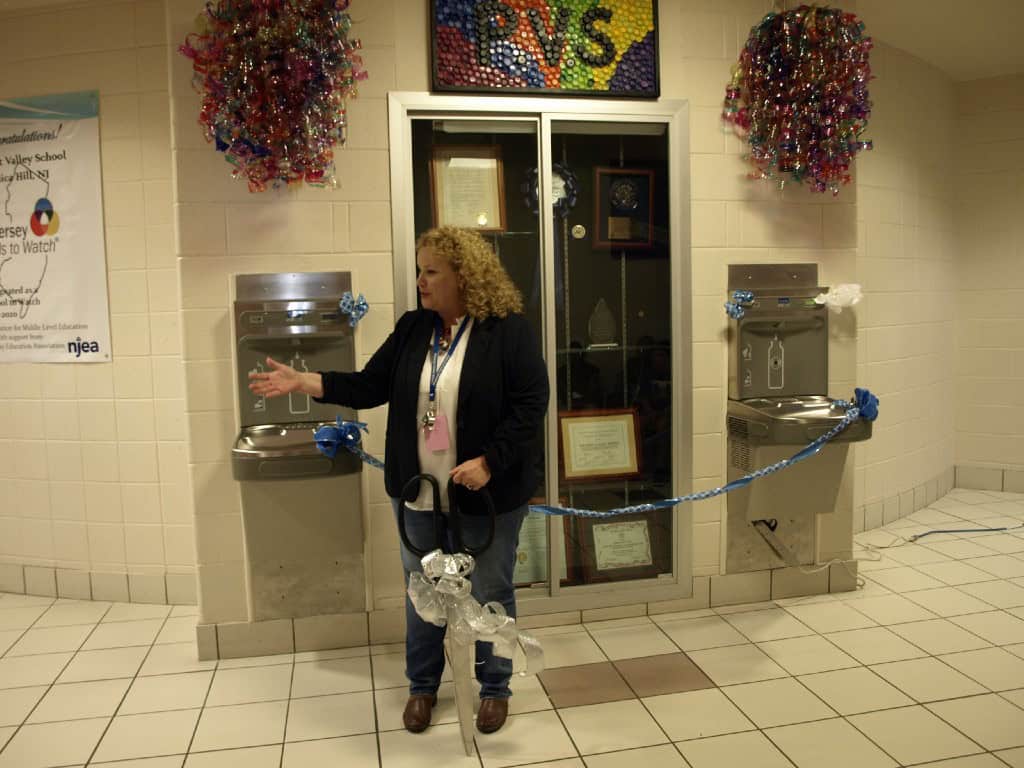
Their first project was the colorful chandelier pieces that hang above the two fountains, which were made up of plastic water bottles. The project, Loomis said, took two to three weeks to complete.
“We wanted to show the school that repurposing plastic bottles, was not only possible, but also fashionable,” said fifth grader Cameron. “We colored the plastic bottles that we saved with Sharpie markers. Many of the bottles have different colors and patterns to make the chandelier brighter and more interesting.”
The chandeliers, Cameron added, were made up of more than 100 recycled bottles that were then spiral cut to create a curly effect. Sitting between the chandeliers is a bottle cap mosaic that Loomis said took roughly two weeks finish and install.
“We knew that we couldn’t ignore all discarded caps from the chandelier bottles,” said fifth grader Jonah. “We decided that the mosaic was the perfect final piece for this project.”
The students gathered loose caps and placed them into a color-coordinated pattern, cut different shapes and sizes in them to add dimension, filled in empty spaces and then spelled out “P-V-S” using the leftover caps.
In between creating the art pieces, the students were taught about their impact their carbon footprint has on the earth, researched how effective recycling is for communities and what they can do every day to help the environment.
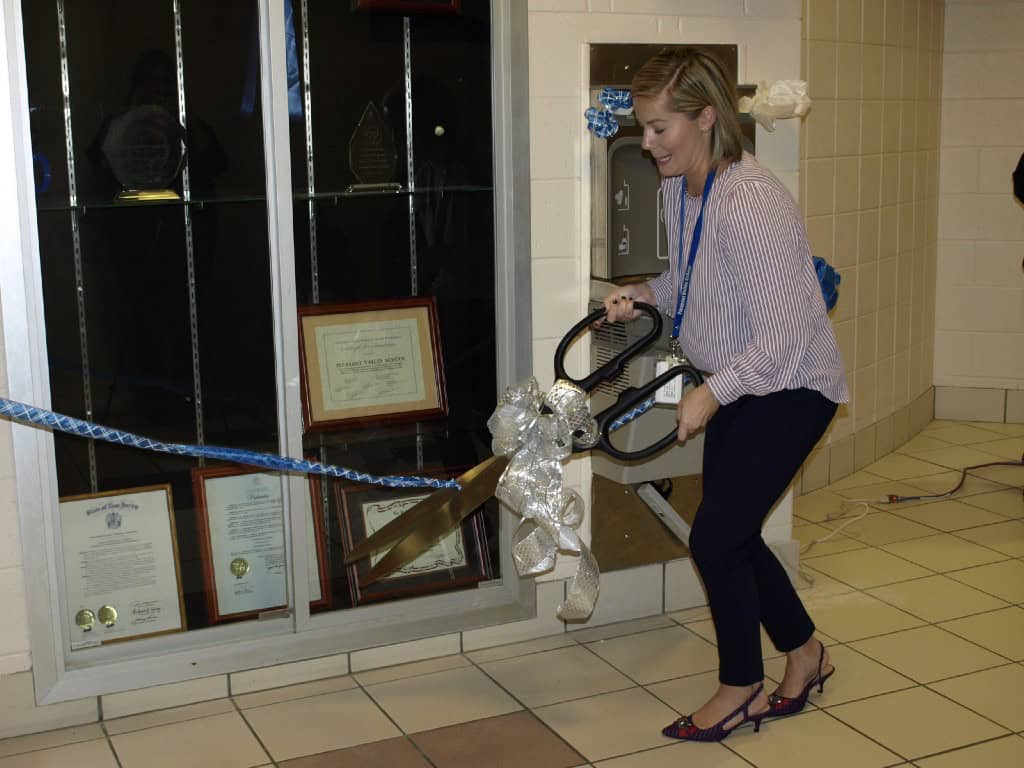
The filtration system came to be after Loomis presented her children’s findings to an administrative meeting and someone proposed the idea of fundraising to install one in Pleasant Valley School.
“The boys and girls decided the fundraisers should be for reusable bottles, that way everyone could get one and they could use them at the fountains,” said Loomis. “They helped design them, helped research companies to get a great bottle for a great price and worked everything out. They were very involved, and we collected all of the money, had a spreadsheet, and they delivered the orders around the school once they were packaged.”
Altogether, the students raised a little more than $1,300 through reusable water bottle sales, and some parent donations, which were then matched by the school’s Parent Teacher Association. With the funds, they were able to purchase two filtration stations that not only allow students to refill their water bottles, but also drink water out of the fountain extension.
The fountains, which sit across the school’s cafeteria, and the classroom lessons have pushed students to want to learn more, recycle on their own time and implement environmentally conscious decisions in their homes.
“Some of my kids were inspired to pick up recyclables during recess and it soon became a recycling club,” said Loomis. “They would do walks in their neighborhoods and pick things up so they kind of came up with their own after-school clubs and groups they would do.”
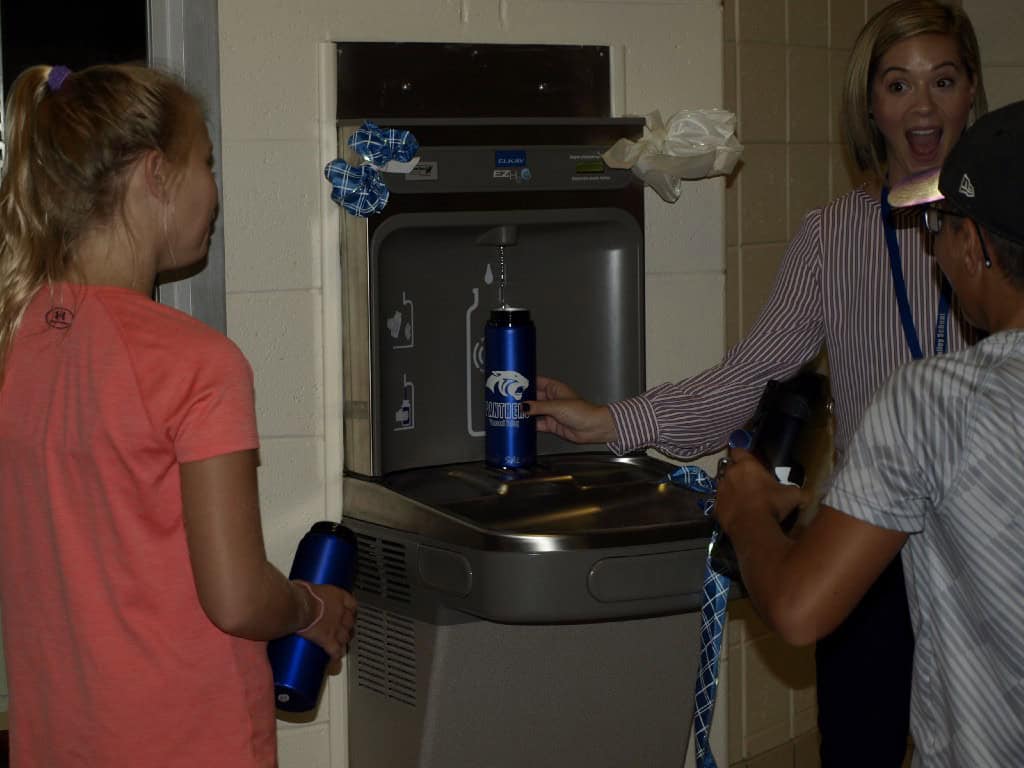
Students, Loomis added, pushed their parents to refrain from purchasing plastic water bottles and opt in for the reusable types and to teach other adults what can and cannot be recycled.
As a principal, Jennifer Hackett-Slimm said the faculty and administration are proud of what the students and Loomis have accomplished since the start of the project.
“The students came to realize that they are capable of so much more than they expected and they had a teacher who empowered them,” said Hackett-Slimm. “We’re really proud of this effort and the efforts of our students as well.”
While there were previous discussions of possibly expanding the projects out to the rest of the district, Loomis said she has other plans for her current fourth-grade class.
“This year with the plastic bags, I have a different idea in mind, so we’ll see where it ends up” said Loomis.


